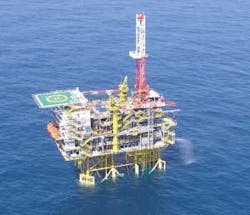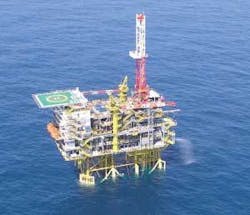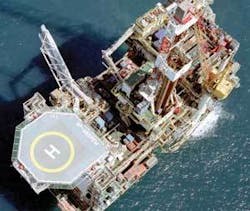A More Collaborative Approach
“The biggest challenges for the offshore segment of the industry are the increased water depths, the increased pressures that occur in deep water, and the lack of infrastructure in many of the remote production areas,” said James Pappas, senior engineering advisor for Devon Energy Corp. “One of the most promising developments is in the area of subsea separation and boosting rack records of success as offshore service providers worldwide.
It is no surprise to see Norwegians taking the lead in technology development given Norway’s success as an oil and gas producer. Technological advances, in fact, have been cited as the key factor in helping the country achieve an incremental growth in oil production higher than any other non-OPEC producer during the 1990s. The challenges of the Norwegian continental shelf (NCS) - including rough seas, strong currents, harsh weather conditions and frigid temperatures - have resulted in references to the area as a “technology greenhouse” for the oil and gas industry.
Other firms that have partnered with many exploration and production companies around the world in the research and installation of innovative subsea structures include the Cameron Division of Cooper Cameron Corp., and FMC Technologies, specifically through its specialized FMC Subsea Systems unit.
“I think the main difference in the application of new technologies today as compared to 20 years ago is that the service companies often take the lead,” Pappas said. “It used to be the case that the major E & P companies maintained the in-house staff, research facilities and budgets to do all of the development work themselves, but with technology now changing so fast, it makes more economic sense for the service and supply companies to provide that expertise.”
An Innovator’s View
Mark Crews, Vice President of Technology for Cooper Cameron, agrees that the initiative for technology development seems to have shifted to the service/supply sector in recent years - a phenomenon he attributed to the reluctance of the industry to embrace new approaches to existing challenges.
“There aren’t a lot of big risk-takers these days because nobody wants to hang a big subsea development on new equipment or technologies until they have proven themselves,” Crews said.
Cameron has been a key player in the worldwide subsea oil and gas industry since its beginning more than 40 years ago and remains a primary supplier of subsea wellheads, trees, and control systems. The company has, in fact, forged quite a reputation for collaborative technology development, and maintains licensing agreements with its major competitors for the manufacture and sale of subsea equipment based on proprietary Cameron designs. Just over a year ago, Cameron introduced a patented all-electric subsea production system called the CameronDC. Powered by direct current, the system is revolutionary in that it offers solutions to many of the problems with batteries, hydraulics or accumulators that trouble conventional electro-hydraulic equipment.
Robert Lopez, Cameron’s Director of Subsea Electric Systems, was quick to point out that the all-electric tree was only one component of an overall subsea system, and that the technology underwent five or six years of rigorous testing before being first introduced at the 2004 Offshore Technology Conference.
“At that time, we’d developed and tested the equipment in cooperation with BP’s project development people and were convinced that it was commercial,” Lopez said. “In addition to reliability studies, the testing also included a lot of cost-benefit analysis to demonstrate the economic viability of the technology,” he said. “The pilot project was actually conducted from BP’s Magnus Platform in the North Sea, after which we put together a complete working system that was demonstrated at the 2005 OTC. There has been a dramatic interest in the technology ever since.”
As for what’s next on the technology horizon, Crews believes that subsea processing on the seabed is an inevitable area for commercial development.
“With everyone looking for the next giant or ‘elephant’ field, we’ll no doubt see drilling in ever-deeper water - which means larger investments, higher pressures and longer step-outs,” Crews said. “There will simply be greater demand for seabed processing.”
‘Disruptive’ Technologies
It seems counterintuitive to view innovation in any discipline as “disruptive,” but Weatherford International Ltd., prides itself in the development of new equipment and techniques that represent fundamental changes in the way operations are conducted. As Weatherford sees it, the implications and long-term gains from these inventions reach much further than traditional “sustaining” technologies that yield only short-term benefits.
While Weatherford operations currently extend to nearly 500 locations in over 100 countries, the company’s research and development efforts are concentrated at two sites - a western hemisphere location in Houston and an eastern hemisphere facility in Aberdeen, Scotland. Both locations feature test bays, fixtures and fully-functional drilling rigs to encourage industry-wide development and commercialization of engineering and technology techniques for drilling, completion and production operations.
Cited as an example of one its “game changing” technologies is Weatherford’s Remotely Operated Production Optimization System which speeds the transfer of real-time data into automated process controls to improve production recovery and improve operating safety.
Further evidence of Weatherford’s commitment to R & D is the sharp increase in its ownership of intellectual property (in the form of patents) since 2000.
A Collaboration Pioneer
Although the concept of collaborative project development seems to have been only recently discovered by some of the newer “offshore players,” it is by no means a new idea. Working in partnership with offshore operators for many years, FMC Technologies has attained a position of leadership as a manufacturer and supplier of subsea production systems, including subsea trees, controls and manifold and tie-in systems. With primary operations serving the Gulf Coast (from Houston), the North Sea (from Kongsberg, Norway) and Brazil (from Rio de Janeiro), FMC is making substantial investments in research and development projects which seek the most cost-efficient applications of breakthrough technology.
Deepwater Completion Specialists
When it comes to experience in dealing with the high pressure, high temperature environments of deepwater oil and gas production, few companies can match the track record posted by the Baker Oil Tools Division of Baker Hughes. The company shares many of its “lessons learned” and a variety of technology-specific information (much of it in printable pdf format brochures) - along with online links to an extensive summary of current deepwater technologies - through a dedicated deepwater website at www.bakerhughes.com/deepwater.
Although the web-based resources available through this portal are obviously focused on solutions available through Baker Hughes and affiliated companies, the menu of deepwater drilling, completion and production management technologies provides a compelling overview of the challenges facing offshore oil and gas operators.
Problem Solvers
As hurricane-impacted operators in the Gulf of Mexico can attest, the first numbers on their speed-dial lists are likely those of the big service and supply companies that can come to their aid - in a hurry. No matter where in the world the offshore disruption occurs, chance are that Halliburton - through its KBR unit or specialized Halliburton Subsea team - will have the necessary problem-solving experience and equipment standing-by.
One notable Halliburton development is the patented GoFlo remediation system that removes restrictions and blockages from subsea flowlines and pipelines. GoFlo operates by deploying composite coiled tubing into restricted lines, then applying a combination of chemical, mechanical and thermal treatments to break-up or eliminate the restrictions. - thus providing a quicker and less costly alternative to line replacement.
Goflo is but one example of Halliburton’s consultancy and troubleshooting services intended to minimize offshore production downtime.
Subsea Monitoring
Faced with the unrelenting punishment of high operating pressures, unpredictable ocean currents and other often-unseen perils, deepwater operators are making substantial investment in the development and installation of electronic monitoring technology. Oslo-based CorrOcean has developed a range of state-of-the-art monitoring equipment that can instantaneously detect and quantify not only production flows, pressures and temperatures, but also measure the corrosion, erosion, cracking, pitting and other conditions that could eventually result in equipment failure. The company in recent years has focused on customizing monitoring systems for reliability in water depths up to 10,000 feet and operating temperatures of 285 degrees Fahrenheit or more. One such CorrOcean installation is monitoring internal corrosion in subsea flowlines on the BP-operated Greater Plutonio Project in Block 18, offshore Angola.
Another Norwegian firm, Aker Kvaener, helps teach offshore operators the latest techniques in equipment reliability through Condition Monitoring Worships to assist in the implementation of predictive maintenance programs. Predictive maintenance is based on the operating health of the equipment that seeks to correct problems before they become critical failures. Applying such specialties as vibration analysis, infrared thermography, tribology and emission monitoring, Aker Kvaener also provides experts to assist companies in developing baseline data for the development of ongoing equipment reliability programs.
Monitoring the geologic stability of the seabed underlying production equipment is a sometimes-overlooked element of offshore operations. Weir-Jones Offshore, a unit of the diversified Weir-Jones Group headquartered in Vancouver, Canada, is a provider of custom-designed microseismic monitoring systems that can be programmed to deliver continuous or event-triggered reporting depending on the operator’s data requirements. Typical installations for Weir-Jones include monitoring base structures, jackets, sub-sea structures, ships and loading buoys, pipelines and artificial islands, with related equipment easily adaptable for reservoir response studies.



